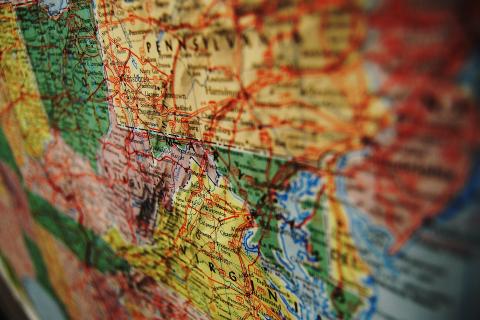After growing up in Ann Arbor, Michigan and graduating from Pioneer High School, where we had a very strong Latin program, I thought it was normal, even expected, that there was a plethora of Latin-teaching jobs across the country. In pockets of the nation where there are strong, historical bases of liberal arts and classical learning, such as universities, this might still be true. On the east coast, too, with its long and rich history of a focus on classical education, the trend continues. In the area popularly referred to as the DMV (the metropolitan area comprising the District of Columbia, southwestern Maryland, and northeastern Virginia), there is a consistent, high level of Latin-teaching positions, both taken and available, spread between public, private, and parochial schools.
In the DMV there are a number of opportunities for aspiring and continuing Latin teachers to take. Teaching positions come and go, but the general trend has been an increase of the jobs available. Why the rise in Latin-teaching availability? It all has to do with student enrollment, registration for Latin classes, and an increased push for a classical education. The past decade has seen the establishment of the Washington Latin School, for example, which has become a strong institution of its own right over these years. Other schools in the District of Columbia have even seen a push for Latin teaching at the elementary level. Jason Edwards, a current Latin teacher at the public School Without Walls at Francis-Stevens (D.C.), having switched there from Woodrow Wilson High School, says, "I love my school. I feel just as engaged intellectually teaching younger learners as I did teaching older ones, sometimes more so."
Other Latin-teaching positions are virtually traded by those who decide their current employment situation might not be their best fit. Teachers in the DMV frequently move schools or even change districts. The author of this article began his teaching career at Virginia's George Washington Middle School in Alexandria City Public Schools, only to switch after three years to the district's T.C. Williams High School. Though the experience at the middle school was full of enthusiasm, energy, and strong support, there was a constant desire to teach beyond a first-year level of Latin. Now at the high school, the author teaches levels one through four, plus the Advanced Placement curriculum. Another local teacher, Lauri Dabbieri, has re-established herself within the past ten years. After teaching at Virginia's Fairfax High School in Fairfax County Public Schools for six years, she now teaches across the river in D.C.'s Sidwell Friends School, one of the nation's most famous independent schools. " I’m lucky that I live in an area with such diversity of choice in terms of job opportunities. In my 20 years in the D.C. area, I’ve had the opportunity to teach inner-city students as well as suburban students, and I’ve never moved house.”
Though there are many positions available in the DMV, there are advantages and disadvantages to working in the area. Being in or close to the capital of our nation presents a wide variety of opportunities for educational, cultural, and social experiences. There are a number of area and local professional organizations, such as the Washington Area Latin Teachers Association and the Fairfax County Latin Teachers Association. Within the public school sector, potential applicants in the DMV can expect a higher-than-usual salary, plus generous benefits. These higher salaries help many balance the realities of living in an area with a high cost of living, which can also be offset by living in one of the area's many suburbs. For a first-year teacher with a bachelor's degree, some example starting salaries are:
- Arlington (VA): $48,228
- Alexandria City (VA): $47,241
- District of Columbia: $51,539
- Montgomery County (MD): $49,013
In private and parochial schools, on the other hand, salaries can vary widely. Generally, though, they are lower than public school salaries. However, these schools usually offer a smaller, more intimate campus and administrative organization, providing for a more personal employment experience.
There are also strong student organizations, most notably state and local chapters of the Junior Classical League. Comprising over 45,000 members, the National Junior Classical League, the parent organization, is the second-largest youth society in the nation (only the Boy Scouts of America is larger) and the largest classical organization in the world. The Virginia Junior Classical League, a state chapter, accounts for over 5,000 of those members, demonstrating the high level of interest students in Virginia have in the classics. D.C. and Maryland also have state chapters, though smaller, and all three organizations regularly come together at area events and competitions.
Local and relatively close universities, such as the University of Maryland, the George Washington University, the University of Richmond, and the University of Virginia (to name but a few) regularly produce high-quality graduates of Latin, Greek, and Classical Studies. These potential teachers are often encouraged to seek out a job in the DMV. Going through the process of certification (for public schools) can often be daunting and time-consuming, and can make it seem that one is at the actual DMV. But since the area has such a pervasive and positive classical culture, once in, a teacher should feel right at home.
More November 2017 Newsletter Content
Check in on the SCS Initiative to update the K-12 Latin teacher certification requirements.
Learn more about the Seal of Biliteracy endorsement by the SCS and what that means for Classical languages.
Read an account from the SCS Summer intern about why learning Latin has been impactful in high school.

